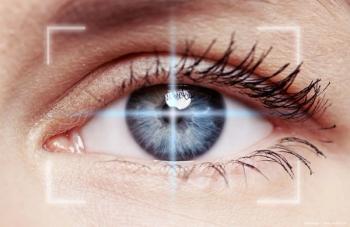
Artificial iris implant provides good surgical results
A new artificial iris implant (Dr. Schmidt Intraocularlinsen GmbH) provides patients with full or partial iris defects with good surgical results, such that it is difficult to differentiate the normal eye from the one that sustained trauma and underwent implantation of the artificial device.
Key Points
The problems with iris defects are two-fold: the defect may be a cosmetic problem for the patient or the patient may have photophobia as well as visual impairment, Dr. Winkler von Mohrenfels explained.
Large defects a problem
In light of this, Dr. Winkler von Mohrenfels and colleagues conducted a study to evaluate the safety and suitability of a new artificial iris implant to correct total or partial aniridia. An advantage of this implant is that it is constructed to look like the fellow eye of the patient in which the device is to be implanted.
The device is small, which allows implantation through a 3-mm corneal incision. He pointed out that after a short surgeon learning curve, the implantation is easy to perform. The artificial iris is inserted through the incision and then unrolled for positioning.
Dr. Winkler von Mohrenfels reported on the results of implantation of the device in three patients (two women, one man) who received a total or partial artificial iris. Two of the patients underwent simultaneous cataract surgery with implantation of an IOL. The third patient was pseudophakic. The mean patient age was 53 years old. These patients had undergone a previous ocular trauma resulting in partial or extensive loss of iris tissue. The minimum follow-up was 3 months (mean, 5 months).
In case 1, the right eye was amblyopic and the left eye sustained a trauma with loss of the iris and penetration requiring corneal transplantation that was performed in 1984. Following surgery, the patient still had an iris defect and underwent full iris reconstruction in 2006. The preoperative visual acuity was 0.3 and postoperatively increased slightly to 0.4. Eighteen months postoperatively, Dr. Winkler von Mohrenfels reported that the pachymetry and the endothelial cell count were stable and the patient was satisfied with the results. There was no photophobia postoperatively and the cosmetic results were satisfactory.
Newsletter
Don’t miss out—get Ophthalmology Times updates on the latest clinical advancements and expert interviews, straight to your inbox.
















































.png)


